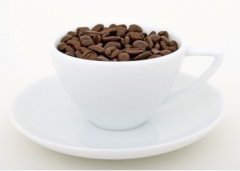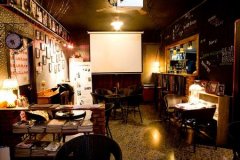Boutique Coffee knowledge about roasting of Coffee
Roasting: as the name implies, is to provide heat to coffee beans, so that a series of internal chemical changes, showing the unique color, aroma and taste of coffee. Every coffee bean contains fragrance, sour taste, sweet taste and bitter taste. How to release it incisively and vividly depends on the roasting heat.
Coffee beans begin the caramelization process at 170200 degrees Celsius. At 185240 ℃, carbohydrates combine with amino acids, peptides and proteins to caramelize, which is known as the Menard reaction (maillard's reaction).
1. Starch is converted into sugars and acids at high temperatures.
two。 Substances such as fibers will be carbonized to varying degrees.
3. Water and carbon dioxide will evaporate.
4. The protein is converted into enzymes and binds with the rest of the fat to form an oil film on the surface of the coffee bean.
5. The weight decreases, but the volume slowly expands and bulges, the color of the coffee beans deepens, the fragrant oil is gradually released, and the texture becomes brittle.
6. With the baking process, chloric acid will gradually disappear, releasing familiar and pleasant fruit acid.
The most important thing in baking is to be able to stir-fry the inside and outside of the beans evenly.
The purpose of baking: 1. Incense, 2. Increase the complexity of coffee taste, 3. Get the color, 4. Form a unique flavor
80% of the taste of coffee depends on roasting, so good roasting is an important procedure for making good coffee.
If the baking technology is good, the beans will be large and swollen, with no wrinkles and luster. Roasting coffee beans with their own characteristics is the ultimate goal of baking.
The flavor of coffee depends not only on the variety of coffee, but also on roasting. During the roasting process, the volume of coffee beans increases by at least half, while the weight of beans decreases by 1. 5%.
The deeper the baking, the more bitter; the lighter the baking, the stronger the sour taste. The degree of baking depends on the characteristics of the coffee bean itself.
Baking degree and characteristics

1, shallow baking (Light) the most mild baking, no aroma and concentration to speak of, unripe beans, green taste of raw beans, not suitable for grinding and drinking, generally used as an experiment.
2. Deep shallow baking (Cinnamon), also known as cinnamon baking, is generally popular and has a strong sour taste. People in the western United States like it.
3. The color of the lighter moderate roasting (Media) deepens, and it is easier to extract the original flavor of the coffee beans. Mainly used for mixing coffee.
4. Moderate roasting (High) coffee has a stronger bitter taste and a lighter sour taste, which is the general roasting method of coffee beans. The sour taste is neutralized and bitter, suitable for coffee such as Blue Mountain and Kilimanjaro. It is loved by Japanese and Nordic people.
5. Deep medium baking (City), also known as urban baking, is more bitter than sour, almost no sour, and has a unique flavor. Coffee, which is suitable for Colombia and Brazil, is popular with urban consumers.
6. Normal roasting (Full City), also known as city-wide baking, is suitable for making iced coffee. No sour taste, mainly bitter taste, bitterness will be aggravated, but high-quality beans will have sweet taste. It is used for iced coffee and is preferred by people in Central and South America.
7. French baking (French) French baking method, slightly black in color, strong in bitterness, oozing grease, bitterness and concentration. Such as charcoal roasted coffee, it is mostly used for coffee brewed by steam supercharger.
8, deep baking (Italian), also known as Italian baking, the deepest baking degree, the beans are black and bright, the surface has oil oozing, the bitterness is very strong. At this stage, coffee beans have been seriously carbonized, and it is difficult to distinguish the taste of one kind of coffee bean from another. Used for Italian high-temperature and high-pressure coffee.
The direct fire is to heat the coffee beans directly with a flame. So far, it also includes infrared and electric heating tubes. Because the coffee beans can be stirred less, direct roasting usually requires stirring the coffee beans. It takes more than ten minutes for coffee beans to bake, and because the temperature rises slowly, the caramelization of coffee beans will be very complete, and the flavor will be more complex and compact than air flow. And this is the biggest advantage of direct fire, now there will be less and less on the market, slowly will be eliminated.
Semi-direct-fire baking is actually similar to direct-fire baking. The flame does not touch coffee beans directly, and a ventilation device is added. Another function of this ventilation device is to suck out the exfoliated silver skin (the film attached to the outer layer of coffee seeds). To prevent the silver skin from burning because of high temperature in the baking room, thus affecting the taste of coffee beans (some so-called charcoal-roasted coffee deliberately do not expel the silver skin. Make the coffee beans smell of smoke.
The air-flow roaster is like a hair-blowing hair dryer, sucking in the air with a fan, then letting the air pass through a heating coil to raise its temperature, and using the air flow as the heating source to bake the coffee beans. the hot air flow can not only provide the temperature needed for baking, but also use the power of the air flow to stir the coffee beans, killing two birds with one stone. The advantage of air flow is its high heating efficiency, so the baking time is short. Large baking plants like to use this method, which is now the mainstream on the market.
The operation of crushing roasted coffee beans into powder is called grinding.
Grinding into a proper coffee powder is very important for making a good cup of coffee, because the extraction of water-soluble substances in coffee powder has its ideal time, if the powder is very fine and the extraction time is long, resulting in excessive extraction, the coffee may be very bitter and lose its aroma. On the other hand, if the powder is very coarse and the extraction time is short, resulting in insufficient extraction, then the coffee will be tasteless because it is too late to dissolve the water-soluble substances in the powder.
Important Notice :
前街咖啡 FrontStreet Coffee has moved to new addredd:
FrontStreet Coffee Address: 315,Donghua East Road,GuangZhou
Tel:020 38364473
- Prev

The best coffee companion for drinking coffee is coffee "little seasoning"
1. Milk and cream milk are suitable for blending espresso or fancy coffee changes, but use low-fat and skim milk as little as possible. Cream is the coffee companion, the scientific name is plant fat powder, is purified from plants, easy to use and easy to preserve. 2. Fresh cream, also known as whipped cream. A high concentration of fat was isolated from fresh milk, and the highest fat content was 45%, 50%.
- Next

Coffee common sense Fancy coffee and pure coffee small knowledge-1
The word espresso comes from the Italian word for fast, because espresso is made and delivered to consumers very quickly. Espresso drips from the filter like warm honey, dark red brown, creamy 10 to 30 percent. Italian espresso brewing can be defined by four M's: Macinazione
Related
- Beginners will see the "Coffee pull flower" guide!
- What is the difference between ice blog purified milk and ordinary milk coffee?
- Why is the Philippines the largest producer of crops in Liberia?
- For coffee extraction, should the fine powder be retained?
- How does extracted espresso fill pressed powder? How much strength does it take to press the powder?
- How to make jasmine cold extract coffee? Is the jasmine + latte good?
- Will this little toy really make the coffee taste better? How does Lily Drip affect coffee extraction?
- Will the action of slapping the filter cup also affect coffee extraction?
- What's the difference between powder-to-water ratio and powder-to-liquid ratio?
- What is the Ethiopian local species? What does it have to do with Heirloom native species?

